Cellulose based materials, particularly acetate, comprise probably the largest category of frame materials sold in practice as fashions stand at present, however they are only a small fraction of the materials available. In this second of our discussions of frame materials, the remaining plastic materials including polyamides and epoxy resins will be considered as well as metal-based materials and composites.
Polyamides
Polyamides occur either naturally (wool, silk) or can be made artificially and are commonly encountered in day to day life, from nylon tights to plastic kitchen utensils. They are becoming increasingly popular in spectacle frames thanks to their high transparency, flexibility, strength and durability. Polyamides are also used in the production of composite materials which include other materials such as carbon fibre to add strength to the base plastic.
Nylon
Nylon has never really caught on as a mainstream ophthalmic frame material, thanks partly to the limited colour range of typically dark or bright opaque colours. It is still commonly used to manufacture inexpensive frames for applications such as safety eyewear. Although lightweight and strong, unless the sides are reinforced with metal, it cannot be adjusted so is often supplied with pre-fitted elasticated bands or clever click systems that allow the length to bend to be reduced without re-bending the side.
Grilamid
Grilamid is one of a family of glass-clear polyamides that have many applications where transparency is essential from food packaging to sight glasses. This nylon-type material is lightweight and modified grades such as TR55, a generic material with improved resistance to alcohol-based cleaning products, are used for spectacle frame manufacture.
Grilamid TR 90 is characterised by its extremely good UV resistance, high chemical and stress crack resistance, as well as high impact strength and is often used in children’s frames. Grilamid sides are sometimes not reinforced, in which case they cannot be adjusted. Better designed frames have a full-length reinforcement or a partial reinforcement either side of the ear-point to facilitate adjustment of length to bend and angle of drop (see figure 1).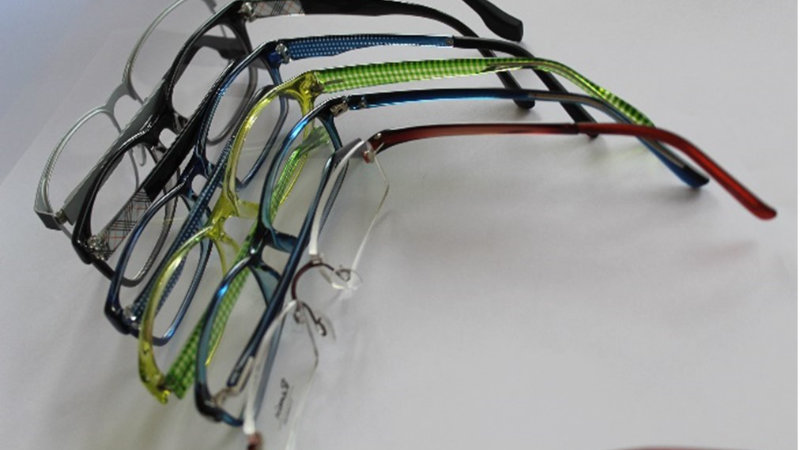
Figure 1: A selection of polyamide frames. Note the lack of full-length reinforcement to the sides and the variety of half joints. The top frame has a metal front and plastic sides though this is not obvious without close examination.
Many manufacturers have developed exclusive variations of these materials either to improve manufacturing efficiency or to improve wearing properties such as resistance to skin acids and sweat. For example: TX5 is exclusive to Stepper; Wolf Eyewear use CX; and most famously Silhouette invented SPX which is the most likely polyamide to be seen in professional qualifying exams.
SPX
One of the original polyamides specifically designed for the manufacture of spectacle frames is SPX, introduced in the 1980s by Silhouette (Silhouette Polyamide X). SPX is a lightweight (figure 2) and flexible material that requires to be cold glazed as heat will cause it to shrink. It is produced by injection moulding and although naturally transparent it can be dyed to produce solid, translucent and transparent colours and can also be coloured using very detailed transfer techniques. It will accept a very high polish but can also be produced with a matt finish. Sides are reinforced along their full length in older samples but increasingly only at the point of the bend.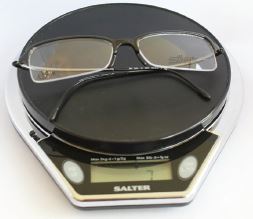
Figure 2: With a specific gravity around 20% less than acetate, less need for metal reinforcement, and the ability to be made thinner due to their superior strength frames made from SPX are among the lightest available. This deceptively large frame, with a boxed centre distance of 68mm, weighs only 7g. By comparison the precious wood frame in figure 6 is over five times the weight at 38g.
Natural PX
For its Neubau brand, Silhouette has developed a new sustainable polyamide material that is based substantially (65%) on derivatives of the castor oil plant rather than on petrochemicals. Natural PX has similar properties to SPX and may replace it in the fullness of time as environmental concerns become more important to consumers.
Recycled materials
With global warming and pollution of increasing concern to many consumers, environmental sustainability and the whole ‘reduce, reuse, recycle’ mantra has started to gain traction in optics with contact lens packaging recycling points in practice and new glazing water filtration systems that save hundreds of thousands of litres of clean drinking water per year and keep microplastics out of practice drains from where they inevitably flow to the oceans.
We have yet to see any retailers actively encourage the reglazing of frames, but many manufacturers are taking their corporate social responsibilities very seriously. Waste acetate from subtractive manufacturing is now recycled by many manufacturers and several start-up companies are recycling other materials. For example, Sea2see.org designs and produces optical frames and sunglasses entirely hand made in Italy from recycled marine plastic waste (principally nylon fishing nets) collected in collaboration with thousands of fishermen in Spanish ports.
Composite materials
Many plastics lack rigidity and/or strength and require reinforcement if they are to be fit for purpose. We see this clearly on sides made of cellulose-based materials for example. A composite material is when the plastic is mixed with fibres to add strength such as when making a boat from glass fibre reinforced resin.
The most common composite material used for frames is carbon fibre, where a plastic, generally nylon, is reinforced with carbon fibres. Because carbon fibres are grey/black the material is characteristically opaque and often incorporates bold bright colours that are achieved through the application of a surface treatment. The proportion of carbon fibre affects the elasticity of the material and as a result, different glazing methods are used. More rigid styles requiring a closing block type rim more usually found in metal frames whereas more flexible frames (with a lower proportion of carbon to nylon) have the lenses inserted by springing in. Cold glazing is required, and an exact size match is essential to avoid damaging the rim or having a loose lens. If the frame is inadvertently heated, then they are easily damaged – fingerprints can be left in the surface of the material and the rims can shrink making glazing impossible or causing the rim to split.
A look at modern frame ranges shows that composite materials are increasing as many plastics can benefit from the addition of other materials to improve their performance or to facilitate interesting cosmetic effects and design ideas. Some composite materials appear to be closely guarded secrets. Others such as Kevlar (used in bullet-proof vests) provide obvious unique selling points (figure 3).

Figure 3: A ceramic fibre and Kevlar composite make this luxury sunglass deceptively lightweight.
Epoxy resins
Perhaps the most well-known epoxy resin in everyday life is the adhesive Araldite where a polymer base is mixed with a ‘hardener’ to create a tough lightweight material that can be used to bond surfaces or fill holes before it sets. Epoxy resin frame materials are produced in the same way where the polymer/hardener mixture is moulded by compression or vacuum casting into fronts and sides. The half joints are positioned in the mould prior to adding the material. Epoxy resins can be easily confused with polyamide materials as many polyamides do not have reinforced sides. The key difference is that epoxy resin is adjustable (figure 4).

Figure 4: An epoxy resin frame, the left side has been adjusted by heating until the material goes floppy, adjusting and holding in place until it cools. If the left side were to be heated now it would return to the shape of the right side without any necessity to apply any force.
Optyl
The most well-known epoxy resin used in spectacle frame production is Optyl from frame manufacturer Safilo. Used historically in premium brands such as Christian Dior and Gucci it is currently making something of a comeback in newer brands such as Marc Jacobs and Michael Kors. In some respects, Optyl is an ideal frame material thanks to its ‘plastic memory’ and ability to keep its shape once adjusted. Plastic memory refers to the characteristic of the material whereby if it is heated, post adjustment, it will return to its original moulded shape. This is useful if the optician needs to rectify a mistake, but less useful if the patient leaves their spectacles in the car on a very hot day. A high amount of heat is required to adjust Optyl otherwise it can easily be broken. It becomes soft and pliable and needs to be held in position once adjusted until it cools. Cooling can be accelerated by using the cold setting on the frame heater. Glazing requires exactly sized lenses to avoid damage to the frame or loose lenses.
Optyl can easily be told apart from other materials when new as it will be printed with the logo. If this has worn off then it can be identified by a lack of reinforcements to the sides, injection moulded half joints, which to the sides usually have an anchor about 25mm in length that might be confused with a reinforcement depending on the colour distribution on the side (figure 5).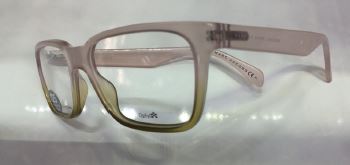
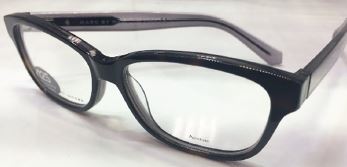
Figure 5: (first image) an Optyl frame, clearly labelled when new, and showing the key identifying feature – no reinforcement to the side but a short anchor at the butt end of the side to which the half joint is attached. (Second image) A similar frame, within the same designer range, but made of cellulose acetate – the key identifying feature being the full-length reinforcement to the sides. Presumably the frames are clearly labelled to avoid expensive mistakes during glazing and adjustment.
Optyl is not available in transparent colours such as crystal, though pale translucent colours and solid opaque colours are available. Patterned colours, such as brown mottled are usually obtained through airbrushing techniques so Optyl should not be easily confused with other materials, nevertheless many an untrained optical assistant, and unwitting trainee optician, has felt the wrath of an owner of a usually vintage Christian Dior frame when they have re-appeared from the adjustment area with the side in two halves.
This raises an interesting point about the usual phrase ‘it’s at your own risk’ that opticians trot out when accepting spectacles for adjustment, especially if they are from elsewhere or showing signs of age. Making the patient aware of the risk is part of the consent process, however, implicit in this is the assumption that the practitioner is competent. It is not sufficient to rely on passing the risk to the patient if the practitioner or their assistant is not adequately trained to recognise the frame material correctly or competent to apply the correct technique to its adjustment. If proper consent has not been obtained, then the practice is liable for its breakages.
Natural Materials
Wood
Wood has been used for many years to make spectacle frames however, because it cannot be stretched, and may split along its grain, it is difficult to spring lenses into and is largely used in combination style frames. Wood may also be used for the sides which cannot be adjusted so are often skull grip styles. From recycled drift-wood, solid close grained ‘precious’ woods (see figure 6) through to engineered laminates (plywood) for thinner profiles, a quick search online will yield a surprising variety. Each item is unique thanks to the inevitable variation in the grain of the wood and the handcrafted nature of production.

Figure 6: A precious wood and 23 carat gold plate combination frame Cartier circa 1992.
Horn
The horns of domestic cattle, buffalo and yak are all used to produce spectacles at the luxury end of the market. Horn has similar properties to tortoiseshell and adopts similar manufacturing techniques as it can also be shaped and bonded using wet heat and pressure. The range of colours includes browns and greys of every shade. Less obviously mottled than tortoiseshell, some manufacturers achieve interesting effects by laminating horn in a similar way to acetate.
Metal Frame Materials
Prior to the introduction of plastics and the widespread use of natural materials such as shell and horn the most widespread materials, used for all but the most rudimentary spectacles, would have been precious metals such as silver and gold, and copper alloys such as bronze, manufactured utilising skills borrowed from the jewellery trade. Solid silver and gold frames are still available, though a great rarity, having been replaced by cheaper alternatives such as rolled gold, which were in turn replaced by electroplated copper-based alloys and modern metal materials such as stainless steel and titanium.
Very few metal frames are in fact, technically speaking, metal. They are instead metal alloys. A metal is a pure element such as copper, iron or titanium, whereas most frames are made from alloys; namely mixtures of several metals in varying proportions which add different properties such as increased corrosion resistance or reduced susceptibility to metal fatigue. Most alloys used in frame production including nickel silver and Monel contain a high proportion of copper. Iron mixed with carbon in different proportions produces different kinds of steel, some of which, including stainless steel, contain other metallic elements such as chromium and vanadium. Pure titanium frames exist, however, for most frames titanium is often alloyed with other metals to produce alloys such as beta-titanium and shape memory metal which is made of roughly equal quantities of titanium and nickel.
The production of metal
Anyone who has seen a steel works or similar production facility will know that the production of metal and metal alloys is the heaviest of heavy industries involving the highest of temperatures and the strongest of forces. Metallic elements are rarely found pure, gold being the notable exception, and must be extracted from ores, that is rocks found in the earth, which must be mined, crushed, heated to massive temperatures, and possibly treated with chemicals, just to get the raw metal material.
To form an alloy the raw metals must be mixed in the right proportions, melted together under high heat, and shaped into blocks, girders, rods, tubes, etc, that are held in stock by metal merchants. Metal frames, with the notable exceptions of strip titanium and aluminium, are almost always made from wires, and it is worth spending a little time on YouTube to see the ingenious process by which wires are ‘drawn’ (pulled through holes of successively reducing diameter) to the required size. Round wires are then, having usually been cut into appropriate lengths, pressed into the different profiles required to make eye-wires (rims), sides, lugs, bridges, brow bars, pad arms, etc. Other parts such as closing blocks and half joints are machined. Once shaped the parts of the frame are joined together, depending on the material, usually by soldering or welding, but also potentially by rivets (pins) or screws.
The same metal or alloy can respond very differently, and develop widely differing properties, depending on how it is heated, to what temperature, whether it can cool naturally or is cooled rapidly (by for example quenching in water or hot oil) and how it is shaped. Many metals become ‘work hardened’ for example when hammered creating a more rigid and harder material – often these processes can be reversed by re-heating the material. Heat or the passage of electric current through a material can also be used to cause controlled oxidisation of the material to produce different colours. Various processes can be used to alter the properties of a metal material even within the same piece – say a side along its length being adjustable at the ear point but being elastic elsewhere helping it to retain its desired fit.
An average consumer may well understand why a solid gold Cartier frame might be 20,000 times the price of a typical ready reader, but they usually fail to understand why even a frame dispensed within NHS voucher prices is so much better quality. It is up to opticians to understand how frames are made and the properties they possess to demonstrate to patients why it is in-fact a marvel that metal frames can be produced for the prices they are at all.
Solid gold
The quality of gold is assessed by the carat system where pure gold is said to be 24 carats, that is 24 parts out of 24 are pure gold. The greater the gold content the greater the carat value and the more valuable the product. Wedding rings are typically 22 carat gold and other jewellery items are commonly manufactured in 18, 14, 12 and 9 carat gold and are hallmarked as such. Gold is prized for its colour and because it does not tarnish, rust or cause allergic reaction, and because it is highly malleable – that is it can be shaped without losing its strength – and because it retains these advantages even when alloyed with other metals. In fact, mixing gold with some metals may improve some of these properties – for example the addition of as little as 1% titanium allows the gold to still be within the tolerance to be classified as pure, but dramatically increases it hardness and strength increasing its application to a wider variety of uses including the production of thinner, lighter frames.
Gold’s big disadvantage is its price, around £40 per gram at the time of writing, which equates to between £1,000 and £1,500 material costs per frame, around 50% dearer than platinum and 80 times more expensive than silver. In the authors’ experience solid gold frames, made individually to order, retail at prices over £10,000 whereas solid silver retails at about a tenth of this. The invention of rolled gold and gold electroplating have enabled the appearance of solid gold to be retained at a fraction of the cost.
Rolled gold
Rolled gold was previously known as gold filled (see figure 7) though this is no longer an accepted term. Rolled gold represent the best quality of gold coloured frames after solid gold although many manufacturers would claim that top quality heavy gold plate is now as durable and hypoallergenic.
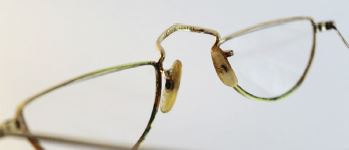
Figure 7: The 12 Carat gold filled (GF) Algha 722 half eye (hallmarked on the bridge) was very high quality and available free to patients, provided by the NHS, until the mid 1980s and the introduction of the NHS voucher scheme. Although this frame looks in poor order it was used daily for over three decades and re-glazed several times.
Rolled gold also requires heavy machinery and is produced in sheet and wire form to produce jewellery, writing implements, gift ware such as cigarette lighters and cufflinks, as well as spectacle frames. To produce a wire, a solid cylinder of base metal such as nickel silver has gold ingots of the required carat rating welded or soldered to it and is then rolled under heat and pressure such that the diameter of the cylinder steadily reduces, and the gold becomes integrally bonded in a single thick layer to the base alloy (figure 8). Eventually it is drawn into wires from which frames are manufactured.
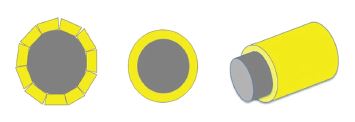
Figure 8: Production of rolled gold.
The original proportion of gold to base metal is maintained throughout the process and is stamped on both the raw material and the final frame either as a fraction (for example, 1/10 14KT means that 1/10th of the weight of the frame is 14 carat gold) or as a number of thousandths (for example, 20/000 18ct means 20 thousandths or 2% of the weight of the frame is 18 carat gold). Although rolled gold frames are considered highly resistant to corrosion and hypoallergenic the various parts are joined together by soldering, usually with palladium, which is not hypoallergenic although it is highly unlikely to be found in contact with the skin. To add further luxury and cover any visible solder, many rolled gold frames are electro-plated after assembly with a thin layer of gold.
Because the gold is integrally bonded with the base metal in rolled gold, it cannot crack or flake off when bent or subject to excessive heat or cold which results in a frame that will retain its gold colour for much longer without corroding and discolouring.
As with jewellery, rolled gold is available in yellow, rose and white. Rose gold is produced by alloying the gold with a proportion of copper, 14 carat rose gold being 58.5% pure gold. White gold is usually an alloy with nickel but may alternatively contain platinum or palladium especially if used in dentistry. Other silver coloured precious metals include rhodium and ruthenium which are more likely to be found on electroplated frames. Rhodium is also used to electroplate solid silver frames to prevent tarnishing.
Silver
In the experience of the authors, silver is only available to special order for one-off handmade frames. It is a good frame material except for one crucial problem – like jewellery, it suffers the disadvantage that it tarnishes, turning grey-brown if not worn, and in any intricate or inaccessible parts not subject to wear. Pure silver is not used, sterling silver being preferred to increase hardness and strength. This is signified by the same ‘925’ hallmark seen on jewellery indicating that 925 parts per 1,000 (92.5%) of the weight of the metal is pure silver, the remainder usually being copper.
Electroplated Metal Alloys
Electroplating is a process whereby a current is passed between terminals in a bath filled with a metal salt solution, the parts to be plated forming the cathode and the plating metal forming the anode. Metal is deposited on the frames from the solution, the ions being replenished from the anode. The longer the frame is subject to the process the thicker the plating. The metal used to plate the frame will depend on the colour required, the overall quality/durability, and the stage of the process. A gold colour requires gold of a suitable carat, a silver colour can be achieved by plating with chromium, rhodium, platinum, etc (figure 9). Other colours can be achieved with metals such as ruthenium (grey), and metallic oxides such as chromium oxide (black), and various other salts to produce familiar colour options such as bronze and gunmetal.
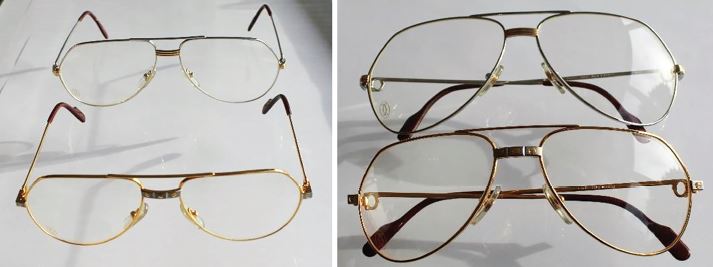
Figure 9: Platinum plated (left) and 23 carat yellow gold plated (right) pilot shaped gents’ frames. The higher the carat rating the more yellow the gold.
A key advantage of electroplating is that it can be done after the frame has been assembled and is therefore applied to all parts equally and will also hide any possible discolouration caused by soldering or welding processes (figure 10).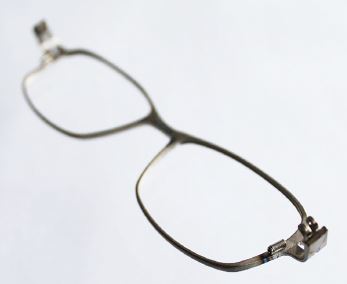
Figure 10: A Monel frame at an early stage of production. The blue discolouration beneath the closing block is has resulted from the welding process and will be hidden when the frame is electroplated.
It is often said that a disadvantage over rolled gold is the inability to plate a frame to the same thickness of gold and that therefore a plated frame will be less durable. However, plating technology has come a very long way (it is even possible to plate plastic materials with metal) and these problems have largely been solved.
When surfaces are built up in layers as they are with electroplated materials, they can suffer from adhesion problems. Most opticians will have experienced a similar problem with multilayer antireflection coated lenses, where the coating can lift from the lens when subject to excessive heat such as the injudicious use of a frame heater or being left on the dashboard of a car on a very hot day. With anti-reflection coatings the very limited number of suitable transparent materials means that this problem will never fully be solved, however, in all but the cheapest of electroplated frames poor adhesion is unlikely to be a problem.
The issue of layers ‘sheering’ or passing over each other and cracking/flaking is caused by the layers expanding at different rates when they get hot. By selecting materials that have similar thermal coefficients of expansion, and by gradually building up layers between the base metal and the final layer of electroplating, gradually changing the coefficient of expansion, the problem of the plating breaking down can be avoided.
Copper alloys
Copper has been alloyed with several different other metals for over 5,000 years and many of them have been used to make spectacle frames over the years including: brasses (copper-zinc); gunmetal (copper lead); bronze (copper-tin and including phosphor bronze and aluminium bronze); and copper beryllium. In recent times, however, the most popular alloys used to produce metal frames are a variety of copper nickel alloys.
Nickel silver
Also known as German silver, nickel silver was originally produced as a cheaper alternative to sterling silver for the manufacture of jewellery. It contains no silver but is made within the stated tolerances from: copper (25-50%); zinc (10-35%); and nickel (5-35%).
Monel
This nickel base alloy contains 68% nickel, 29% copper and small quantities of iron, manganese, silicone and carbon totalling 3%. It has high strength and high resistance to corrosion and is thought to be the most common alloy used for ‘standard’ metal frames.
Beryllium bronze
A copper base alloy containing 2.25% beryllium which dramatically increases the hardness and corrosion resistance of the material.
Other Metals
Stainless steel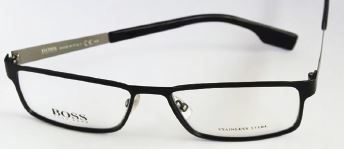
Figure 11: Stainless steel frames can be made extremely thin as the side on this frame demonstrates. If not thin in profile they are difficult to tell apart from other metal alloys and are consequently often labelled for identification. Stainless steel is unlikely to corrode and will not turn green.
Iron as a material is dramatically improved by the addition of up to 2% carbon to make steel, however, like iron carbon steels rust on exposure to water and oxygen. Steel can be made corrosion resistant by the addition of 12 to 25% chromium and so-called stainless steels are required for the manufacture of frames.
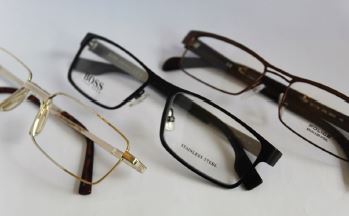
Figure 12: Stainless steel frames are usually labelled as such as they can be difficult to tell apart from other metal materials.
Stainless steel is very strong and can be used to manufacture the very thinnest frame profiles (see figure 11), however, if it is easily misidentified and for that reason is usually labelled (figure 12). Stainless steel is generally considered hypoallergenic however allergic reaction is not unknown because many stainless steels contain nickel (figure 13). Patients may be aware if they are allergic since most watch casings are made from stainless steel.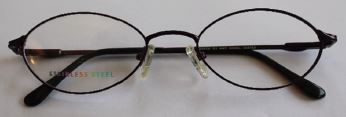
Figure 13: Stainless steel that contains nickel may be coated with an anti-nickel coating.
Aluminium
Familiar from its common application in the kitchen, from sauce pans to foil, aluminium is among the lightest metals used to make spectacle frames. If two frames were constructed of identical dimensions an aluminium frame would be some 40% lighter even than titanium (table 1), however, it lacks strength and elasticity and therefore is only suited to thick profiled ‘chunky’ frames if the spectacles are to be fit for purpose.
Aluminium frames are usually very rigid and if bent out of shape do not spring back. They are therefore difficult to adjust and suffer from metal fatigue such that repeated adjustment will cause aluminium to break much sooner than any other metal. Traditionally it has not been possible to solder or weld aluminium, although this is changing (figure 14), and fronts and sides, including their half joints, have often been machined each from a single piece of metal. Alternatively, half joints are added later using pins (rivets) or screws. Another identifying feature is that because aluminium conducts heat (and electricity) very well it is cold to the touch.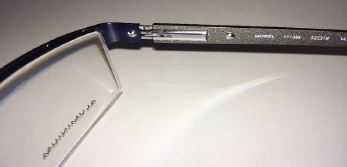
Figure 14: Aluminium sides and front with half joints attached using screws. The upper eyewire, however, has clearly been attached to the brow bar by welding.
Titanium
In many respects, titanium can be considered the ideal frame material: it is up to 48% lighter than traditional copper/nickel frame materials, strong, and flexible. Titanium metal oxidises on contact with air and this tough surface layer endows it with corrosion resistance on a par with stainless steel. The oxidisation process can also be controlled using heat or varying electric currents to produce different colours, the natural colour being mid-grey. This oxidation means that normal welding techniques cannot be used: parts must be welded in an inert atmosphere (eg argon gas), and for this reason manufacture is relatively costly and repair often uneconomic. The difficulties with manufacturing hinges and screw blocks from titanium (which requires tools made from an extremely hard but expensive materials) has led to much innovation including the development of plugged rimless, hinge-less sides, screw-less hinges and ingenious glazing methods.
Despite the many advantages of titanium, poorly defined standards of manufacture have led to opticians (and sales representatives) making claims for frames that are untrue and leading to a number of issues as illustrated by the following case from the authors’ experience.
Case study 1 – hyperhidrosis
Mr S ordered a pair of spectacles from a well-known high-quality designer brand that offers a two-year warranty as standard. He explained that the plating on his previous several pairs of spectacles had worn off within a few months and the frame had turned green where it contacted his skin, causing considerable discomfort and an unsightly appearance. As his mid index photochromic progressive lenses were expensive and had gone to waste previously, he wanted to ensure that the two-year warranty covered corrosion of the frame and receiving this assurance he placed his order.
Seven months later Mr S returned with his usual problem demanding a new frame under warranty, which, duly supplied, was also returned within a similar timescale. The lenses were transferred to a third frame, however, under the optician’s two-year ‘no quibble’ warranty it would be necessary to solve the problem more satisfactorily. Clear nail varnish was used to coat the inside of the sides but lasted less time than the manufacturer’s polyurethane coating. A better alternative would have been to use Ultrathin Shrink Tubing (available in 3mm, 5mm and 6mm from Hilco). However, this was not known about at the time. The decision was eventually taken to start again with the author getting involved for the first time.
Of note was that Mr S, who was almost bald, continually wiped his head and brow with a handkerchief while talking with the dispensing optician. Questioning revealed that he suffered with hyperhidrosis – or excessive sweating – particularly from his head, face and neck. He was not, so far as he was aware, allergic to nickel, although where the worn frame contacted the side of his head had clearly caused some form of dermatitis.
As Mr S was most concerned about the green appearance (caused by the oxidation of copper) the priority was to choose a frame with improved corrosion resistance, such as one made from rolled gold, or ideally choose a frame that did not contain any copper at all. At this point it became obvious that, in the main, optician’s have no idea which alloy is used in the manufacture of the metal frames they sell. Nevertheless, if a metal frame’s material is not obvious it is virtually certain that it will be made from an alloy that contains a substantial proportion of copper such as nickel silver or Monel. The stainless steel and titanium frames that were in stock all seemed to have a lacquered finish or were not an acceptable fit/colour. The patient was adamant they did not want a plastic frame so was left with two options: solid gold or titanium. A range of titanium frames that were coloured by heat and/or electrochemical treatment (rather than with coloured lacquers or electroplating) to ensure maximum corrosion resistance was ordered on approval. A high-quality German frame with a three-year warranty was selected. Not only did Mr S not need to claim on the warranty the frame was still in such good condition a few years later he was able to have it re-glazed.
Case study 2 – titanium allergy
Many frames, including those made from titanium, are marketed as being hypoallergenic. Hypoallergenic simply means that a frame causes less allergy problems than average and given that the average is so dramatically distorted by nickel allergy, a common spectacle frame material, it could be argued that all frames that do not contain nickel in a place that might contact the skin can be considered hypoallergenic. For some time, it was considered that any frame labelled titanium could be sold as hypoallergenic, however, this turned out not to be the case and for this reason there are standards on the description of titanium frames, although in the authors’ opinions they could be stricter. A frame labelled titanium, according to BS EN ISO 12870:2014, must now contain at least 70% titanium by mass in the metal parts, and must pass the nickel release test in the same standard if it contains nickel (figure 15). So-called beta-titanium, where the titanium is alloyed with one or more of molybdenum, vanadium, niobium, tantalum, zirconium, manganese, iron, chromium, cobalt, nickel, and copper also fits into this category.
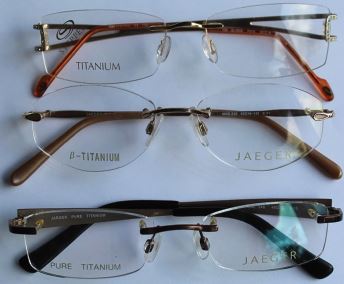
Figure 15: Titanium frames should be correctly labelled to BS EN ISO 12870.
Miss H was dispensed a high-end frame labelled as 22 carat gold plated titanium on the basis that it would not cause her allergy problems. Several months later she returned with contact dermatitis on her cheeks which could not have been caused by anything other than the frames. The supplier insisted that this was impossible, however, the evidence was plain to see, and the frame was returned to the supplier’s parent company abroad for analysis and comment. It turned out the plating process involved first plating the titanium with nickel before applying the gold. At around the same time flexible shape memory metal frames were also sold as being hypoallergenic, however, these materials are usually an alloy of nickel and titanium in roughly equal proportions and should not be sold as hypoallergenic to nickel sensitive clients.
Case study 3 – allergy to ‘pure’ titanium
Mrs B claimed to have experienced a serious anaphylactic type reaction to a frame labelled pure titanium. Unfortunately for the company Mrs B was a scientist and was able to test the frames at the university where she worked and present the results along with her claim for compensation. Questioning revealed that as would be expected when removing the spectacles Mrs B gripped each lug and therefore contacted the side screws which it turned out contained nickel and once the gold plating had worn even slightly (probably caused by a screwdriver when tightening the screws) released the nickel that caused her the serious allergic reaction.
In Mrs B’s case the manufacturer claimed that its frames were within standard since according to BS EN ISO 12870:2014 Annex A.9.5 a pure titanium spectacle frame is defined as a ‘frame of which each of the principal metal components is made of an alloy containing at least 90% titanium by mass’ it was argued that screws are not principal components and that furthermore the frame passed the test for nickel release indicated by the same standard.
The claimant was ultimately able to rely on the fact that she had consented to purchase frames that were labelled as hypoallergenic and sold as nickel free and had not been informed of the risks of wearing the frame she was dispensed despite expressly requesting that they must be nickel free.
Practitioners are warned that frames labelled ‘pure titanium’ are not in fact necessarily 100% pure, and current standards do not prohibit the use of nickel in titanium frames. It would be preferable if manufacturers and BS EN ISO 12870 would work to the same standards as the voluntary code of the Vision Council of America which stipulates that all frames labelled as titanium must be nickel free.
A consequence of Mrs B’s case above was that on the advice of lawyers, the company removed all reference to allergy from its literature and all claims of hypoallergenic properties from dummy lenses and frames. Recent cases in the food industry have shown that, although vanishingly rare, death through anaphylaxis can and does happen and can cost an industry both reputationally and financially. Imagine if the food industry had elected to remove all allergen information from food as a result? Surely the 10% of people who are allergic to common frame materials such as nickel alloys deserve to know what they are buying?
Conclusion
It is becoming harder for practitioners to recognise the plethora of frame materials becoming available, however, most frames are made from traditional materials, and it remains a key skill if practitioners are to avoid embarrassing breakages or dispensing frames that are not fit for purpose.
Current developments are directed towards sustainability and efficiency. Additive technologies such as 3D printing and selective laser melting (sintering) of metal powders have the potential to cut waste to close to zero but will require new materials in the process. In response traditionally wasteful subtractive technologies, such as slab acetate, are beginning to recycle their waste into new frames. Cellulose based materials, apart from their heavy use of water in the production process can be regarded as sustainable whereas as petrochemical based plastics may not. New polyamides based on plants such as castor oil (which grows where food crops will not), and the use of waste products, from animal horns to discarded fishing nets, show more emerging trends.
Knowing your frame materials and telling their ‘story’ keeps the optician at the heart of the frame selection process in practice and adds value beyond merely being able to adjust the frame competently which is the subject of the next article in the series.
Peter Black MBA FBDO FEAOO is senior lecturer in ophthalmic dispensing at the University of Central Lancashire, Preston, and is a practical examiner, practice assessor, exam script marker, and past president of the Association of British Dispensing Opticians.
Tina Arbon Black BSc (Hons) FBDO CL is director of accredited CET provider Orbita Black Limited, an ABDO practical examiner, practice assessor and exam script marker, and a distance learning tutor for ABDO College.
Bibliography
- Brooks, Clifford W and Borish, Irvin M. System for Ophthalmic Dispensing. s.l. : Butterworth Heinemann, 2007. 13 978-0-7506-7480-5.
- Brydson, J A. Plastics Materials. 6e. s.l.: Butterworth-Heinemann, 1995. pp. 597-602. 9780750618649.
- BS EN ISO 12870. Ophthalmic Optics – Spectacle Frames – Requirements and Test Methods. 2014.
- Chambers. Dictionary of Science and Technology. 2007. 978-0-550-10071-9.
- Lefteri, Chris. The Plastics Handbook. s.l.: RotoVision, 2008. 978-2-88893-002-0.
- Obstfeld, Henri. Spectacle Frames and their Dispensing. s.l.: Saunders, 1997. 0-7020-1928-3.
- Sasieni, Lewis Sidney. The Principles and Practice of Optical Dispensing and Fitting. London: Hammond, Hammond & Co Ltd, 1962.
- BS EN ISO 8264. Ophthalmic Optics – Spectacle Frames – Measuring System and Terminology. 2011.
- Fenichell, Stephen. Plastic: The Making of a Synthetic Century. s.l.: Harper Collins, 1996. 0-88730- 732
- Goersch, Helmut. Handbook of Ophthalmic Optics. Oberkochen: Carl Zeiss, 1991.
- Squires, William T. The Metal Craftsman’s Handbook. s.l.: American Association for Vocational Instructional Materials, 1980. 0-89606-050-0.
- http://www.smythejewellery.com/history-of-nickel-silver-and-sterling-silver/
- http://www.titaniumart.com/titanium-info.html
- http://www.eyewearsupplier.com/artwork/differencebetweenacetateeyewearandplasticeyeframes.
